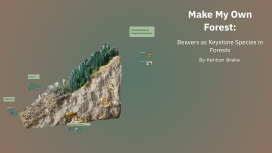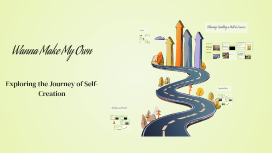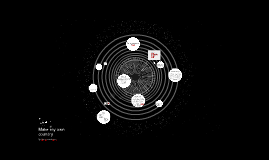Wanna Make My Own
Transcript: Planning: Building a Path to Success Execution Tracking Progress Taking Action Initiating your plan is crucial; it’s the moment theory meets practice. Often, the fear of failure hinders many. Embrace small, actionable steps to build momentum and confidence toward your larger goal. Regularly assessing progress is essential to stay on track. Set clear milestones with measurable metrics to evaluate achievements objectively. This ensures adjustments can be made in real time for ultimate success. Overcoming Challenges Adjusting Strategies Challenges are inevitable in any journey. Identifying potential obstacles ahead of time allows for proactive strategies, such as seeking mentorship or creating supportive environments, to navigate setbacks effectively. Flexibility is key. Evaluate your methods regularly and be prepared to pivot as necessary based on feedback and results. Agile responses to changing circumstances can significantly enhance the chances of success. Celebrating Milestones Maintaining Motivation Motivation can wane during execution. Establish a routine that includes regular breaks and acknowledges achievements to sustain enthusiasm. Utilize visual reminders of your goals to keep the purpose front and center. Recognizing accomplishments boosts morale and reinforces commitment. Celebrate each milestone, no matter how small, to foster a positive outlook and motivate continued effort on the journey ahead. Developing a Blueprint Time Management Strategies Outlining Steps for Implementation A blueprint encompasses a detailed plan outlining objectives and strategies to reach desired outcomes. It includes timelines, resource requirements, and roles, enabling efficient progression toward goals. Implementing effective time management strategies helps prioritize tasks and allocate time appropriately. Techniques such as the Pomodoro Technique or the Eisenhower Matrix can enhance productivity and focus. Implementing a plan necessitates breaking down goals into actionable steps. This clarity ensures tasks are manageable, progress can be tracked, and adjustments made when necessary, promoting accountability. Resource Allocation Contingency Planning Risk Assessment Effective resource allocation involves distributing available assets—such as time, finances, and skills—toward goals. Adequate planning ensures resources are utilized optimally, minimizing waste and enhancing outcomes. Contingency planning prepares for unexpected events or changes in circumstances. By developing alternative strategies, individuals can adapt swiftly to disruptions, ensuring continuous progress toward objectives. Conducting a risk assessment identifies potential obstacles and uncertainties that could impede progress. Understanding these risks enables individuals to devise strategies for mitigation, ensuring greater resilience in planning. Wanna Make My Own Conceptualization Exploring the Journey of Self-Creation Defining Personal Vision Identifying Passion Areas A personal vision serves as a compass for aspirations and decisions, reflecting individual values and objectives. It is essential to articulate a clear vision to navigate the complexities of self-creation effectively. Identifying passion areas is vital for motivation and fulfillment in the self-creation journey. Engaging in reflective practices can uncover interests that align with personal aspirations, driving commitment. Researching Possibilities Brainstorming Ideas Conducting thorough research opens avenues for informed decision-making. Exploring trends, market needs, and personal strengths can reveal unique opportunities for self-creation in various domains. Systematic brainstorming fosters a culture of creativity and innovation. Techniques such as mind mapping and free writing can unlock potential and yield diverse ideas for self-creation. Setting Goals Creating a Mind Map Effective goal setting employs the SMART criteria: Specific, Measurable, Achievable, Relevant, Time-bound. This approach ensures clarity and feasibility, paving a structured path toward achieving personal visions. Mind mapping is an effective visual tool for organizing thoughts and ideas connected to personal vision. This holistic approach enhances understanding and retention, encouraging deeper insights into goals. Reflection and Growth Evaluating Outcomes Learning from Experiences Assessing the results of personal projects is essential for understanding effectiveness. Use metrics to measure success, and identify what achieved the desired impact versus what fell short. Every experience, positive or negative, presents invaluable lessons. Documenting these lessons helps develop resilience and informs better decision-making in future endeavors. Adjusting Future Plans Seeking Feedback Constructive feedback is vital for personal growth. Engaging with mentors and peers can provide new perspectives and highlight areas for improvement that may go unnoticed. Based on evaluations and feedback, reevaluating and

















